
Nakhon Si Thammarat: The Jewel of Southern Thailand
Discover Nakhon Si Thammarat: A blend of ancient history, serene temples, pristine beaches, and vibrant local culture in the heart of Southern Thailand.
Nakhon Si Thammarat, often simply called Nakhon, is a captivating city in Southern Thailand. It boasts a rich history, stunning temples, and vibrant local culture. The city's roots trace back to the Srivijaya Empire, making it one of Thailand's oldest cities. Its historical significance is evident in its well-preserved temples and ancient architecture. One of the must-see sites in Nakhon is Wat Phra Mahathat Woramahawihan, a revered Buddhist temple. Its towering chedi, which houses a relic of the Buddha, is a sight to behold. The temple complex is a serene place, perfect for those seeking peace and spiritual enrichment. Nakhon Si Thammarat is also known for its beautiful beaches and natural landscapes. Khanom Beach, with its pristine sands and clear waters, is a hidden gem. Visitors can enjoy the tranquility of the beach or take boat trips to spot the rare pink dolphins that inhabit the area. The city's vibrant markets, such as the Municipal Food Market, offer a glimpse into local life. Here, tourists can sample delicious Southern Thai cuisine, buy fresh produce, and shop for unique handicrafts. The locals are friendly and welcoming, making visitors feel at home. For those interested in culture, the Shadow Puppet Museum offers an intriguing look at the traditional art of Nang Talung. This ancient form of storytelling using shadow puppets is a fascinating aspect of Southern Thai culture. Nakhon Si Thammarat is a city that beautifully blends history, nature, and culture. It's a destination that offers something for every type of traveler, whether you're a history buff, nature lover, or culture enthusiast.
Local tips in Nakhon Si Thammarat
- Visit Wat Phra Mahathat early in the morning to avoid crowds and enjoy the peaceful atmosphere.
- Don't miss the chance to see the pink dolphins at Khanom Beach. Early morning boat trips offer the best chances for sightings.
- Explore the local markets for authentic Southern Thai cuisine. Try the Khao Yam, a local rice salad dish.
- Hire a local guide to get a deeper understanding of the city's history and significant sites.
- Visit the Shadow Puppet Museum to catch a live performance of Nang Talung, a traditional art form.
Nakhon Si Thammarat: The Jewel of Southern Thailand
Nakhon Si Thammarat, often simply called Nakhon, is a captivating city in Southern Thailand. It boasts a rich history, stunning temples, and vibrant local culture. The city's roots trace back to the Srivijaya Empire, making it one of Thailand's oldest cities. Its historical significance is evident in its well-preserved temples and ancient architecture. One of the must-see sites in Nakhon is Wat Phra Mahathat Woramahawihan, a revered Buddhist temple. Its towering chedi, which houses a relic of the Buddha, is a sight to behold. The temple complex is a serene place, perfect for those seeking peace and spiritual enrichment. Nakhon Si Thammarat is also known for its beautiful beaches and natural landscapes. Khanom Beach, with its pristine sands and clear waters, is a hidden gem. Visitors can enjoy the tranquility of the beach or take boat trips to spot the rare pink dolphins that inhabit the area. The city's vibrant markets, such as the Municipal Food Market, offer a glimpse into local life. Here, tourists can sample delicious Southern Thai cuisine, buy fresh produce, and shop for unique handicrafts. The locals are friendly and welcoming, making visitors feel at home. For those interested in culture, the Shadow Puppet Museum offers an intriguing look at the traditional art of Nang Talung. This ancient form of storytelling using shadow puppets is a fascinating aspect of Southern Thai culture. Nakhon Si Thammarat is a city that beautifully blends history, nature, and culture. It's a destination that offers something for every type of traveler, whether you're a history buff, nature lover, or culture enthusiast.
When is the best time to go to Nakhon Si Thammarat?
Iconic landmarks you can’t miss
Wat Phra Mahathat Woramahawihan
Explore the stunning Wat Phra Mahathat Woramahawihan, a historic Buddhist temple showcasing Thailand's rich cultural heritage and exquisite architecture.
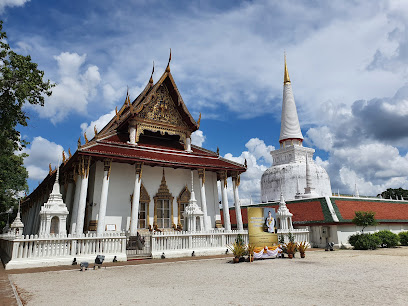
Sanam Na Muang Public Park
Explore the natural beauty and cultural richness of Sanam Na Muang Public Park in Nakhon Si Thammarat, a serene oasis for every traveler.

Kiriwong Village
Explore the serene beauty and vibrant culture of Kiriwong Village, a hidden gem in Nakhon Si Thammarat, Thailand.

Princess Mother 84 (Thung Tha Lat).
Explore the serene beauty and cultural heritage of Princess Mother 84 State Park in Nakhon Si Thammarat, a tranquil escape in Thailand's lush landscapes.
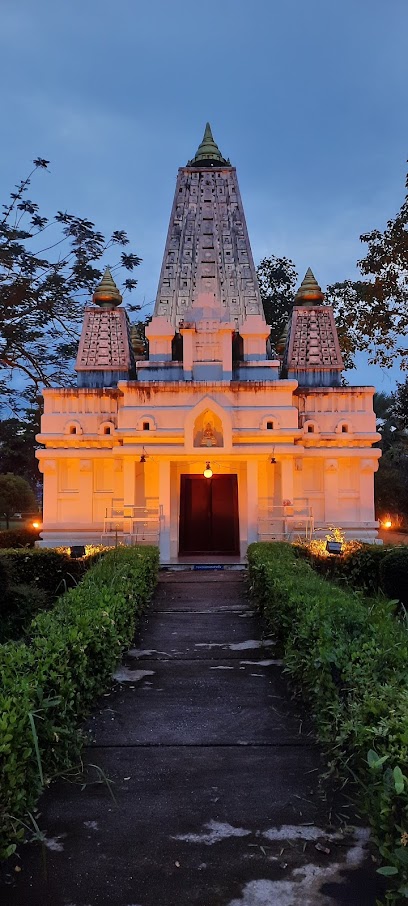
Wat Khao Khun Phanom
Discover the serene beauty of Wat Khao Khun Phanom, a breathtaking Buddhist temple in Nakhon Si Thammarat, where culture and spirituality intertwine.

Old City Wall, Old City Fort of Sridramasokarad
Discover the historical splendor of the Old City Wall of Sridramasokarad, a captivating landmark in Nakhon Si Thammarat that tells the story of ancient Thailand.

Tal Lat Open Zoo
Discover the enchanting wildlife at Tal Lat Open Zoo in Nakhon Si Thammarat, a family-friendly destination for animal lovers and nature enthusiasts.

Bannang Thalung Suchart Subsin
Experience the vibrant cultural heritage of Thailand at Bannang Thalung Suchart Subsin, where traditional performing arts come alive.

Krungching Waterfall
Explore the enchanting Krungching Waterfall, a serene natural oasis in Nakhon Si Thammarat, perfect for relaxation and adventure amidst lush landscapes.

Karom Waterfall
Experience the breathtaking beauty of Karom Waterfall, a serene escape into nature's paradise in Nakhon Si Thammarat, Thailand.

Khao Luang National Park
Explore the breathtaking landscapes and rich biodiversity at Khao Luang National Park, a must-visit destination in Nakhon Si Thammarat, Thailand.
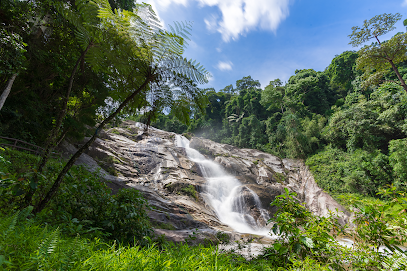
City Pillar Shrine
Discover the spiritual heart of Nakhon Si Thammarat at the City Pillar Shrine, a cultural gem rich in tradition and stunning architecture.

Phrathat Night Market
Experience the lively Phrathat Night Market in Nakhon Si Thammarat, where local culture, delicious street food, and unique shopping await every visitor.
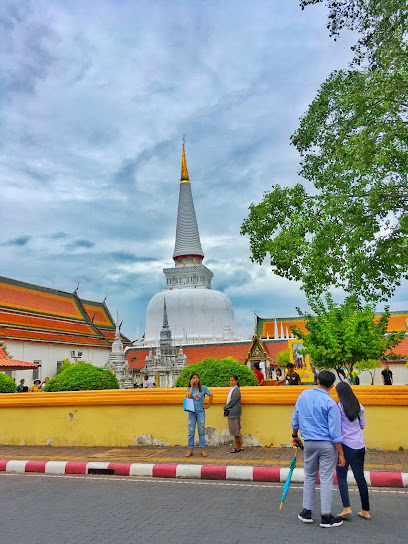
Muang Nakhon Reception House
Explore the rich history and stunning architecture of Muang Nakhon Reception House in Nakhon Si Thammarat, Thailand's cultural gem.

Wat Tao Kot
Explore the serene Wat Tao Kot, a hidden gem in Nakhon Si Thammarat, where spirituality meets rich Thai culture and stunning architecture.

Unmissable attractions to see
Sanam Na Muang Public Park
Discover the serene beauty of Sanam Na Muang Public Park, an urban oasis in Nakhon Si Thammarat, perfect for relaxation and cultural exploration.
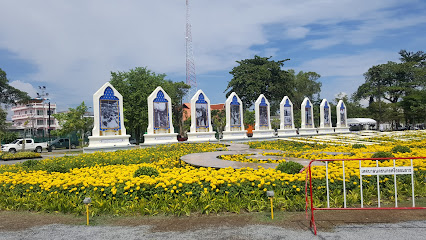
Kiriwong Village
Explore the enchanting Kiriwong Village, a tranquil haven in Nakhon Si Thammarat, where nature meets rich cultural experiences.

Princess Mother 84 (Thung Tha Lat).
Experience the serene beauty of Princess Mother 84, a hidden gem in Nakhon Si Thammarat, Thailand, perfect for nature lovers and families.

จุดเช็คอินเขาช้างสี
Discover the hidden treasures of Lan Saka, a unique tourist attraction in Nakhon Si Thammarat, where nature meets rich cultural heritage.

Old City Wall, Old City Fort of Sridramasokarad
Discover the historical grandeur of the Old City Wall of Sridramasokarad in Nakhon Si Thammarat, a captivating journey through Thailand's rich past.

Phrom Lok Waterfall
Experience the breathtaking beauty of Phrom Lok Waterfall in Nakhon Si Thammarat, a natural wonder waiting to be explored.

วังปลาแงะ
Explore the breathtaking landscapes and cultural richness of Phrom Khiri District, a hidden gem in Nakhon Si Thammarat, Thailand.

Tal Lat Open Zoo
Discover the wonders of wildlife at Tal Lat Open Zoo, an immersive and family-friendly attraction in Nakhon Si Thammarat, Thailand.

สวนสาธารณะเฉลิมพระเกียรติ ร.9 (พร้อม ณ นคร อุทิศ)
Experience the tranquil beauty and vibrant community spirit at Pho Sadet City Park in Nakhon Si Thammarat, Thailand.

Bannang Thalung Suchart Subsin
Experience the vibrant cultural heritage of Nakhon Si Thammarat at Bannang Thalung Suchart Subsin, a hub of traditional Thai performing arts.
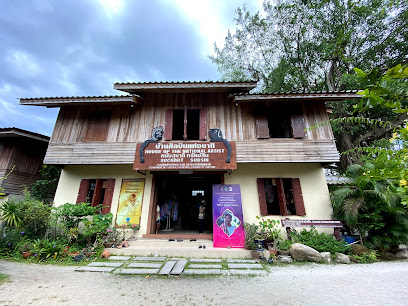
The National Museum of Nakhon Si Thammarat
Explore the National Museum of Nakhon Si Thammarat, where Thai history and culture come alive through fascinating exhibits and rich artifacts.

Kuwkwang Garden
Discover the tranquility of Kuwkwang Garden, a lush city park in Nakhon Si Thammarat, perfect for relaxation and exploring nature.
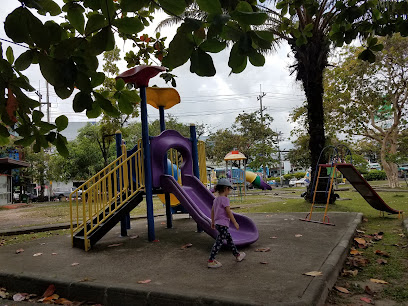
Karom Waterfall
Experience the breathtaking beauty of Karom Waterfall in Nakhon Si Thammarat, a tranquil oasis surrounded by lush greenery and vibrant wildlife.

Khao Luang National Park
Explore the breathtaking landscapes and rich biodiversity of Khao Luang National Park, a must-visit national park in Thailand's Nakhon Si Thammarat region.

Wat Tha Pho Worawihan
Experience the serene beauty and rich cultural heritage of Wat Tha Pho Worawihan, a must-visit Buddhist temple in Nakhon Si Thammarat, Thailand.

Essential places to dine
Krua Nai Nang
Discover authentic Thai cuisine at Krua Nai Nang in Nakhon Si Thammarat—where every dish tells a delicious story.
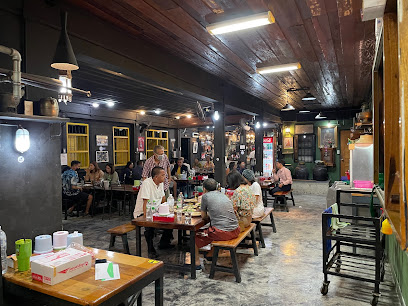
Khanom Jeen Muang Nakhon
Experience the authentic taste of Southern Thailand at Khanom Jeen Muang Nakhon—where every dish tells a story.

Bạng Baw Roti & Tea (Opposite to Phra Mahathat)
Discover authentic Thai flavors at Bạng Baw Roti & Tea, renowned for its delicious halal roti and refreshing tea in Nakhon Si Thammarat.

Chao Ruea
Experience authentic Thai flavors at Chao Ruea, a top-rated restaurant in Nakhon Si Thammarat known for its vibrant dishes and welcoming atmosphere.

Bang Bao Roti & Tea (KuKwang Intersection Chain)
Discover delicious halal delights at Bang Bao Roti & Tea in Nakhon Si Thammarat – where traditional flavors meet modern comfort.

Day & Night Of Nakhon Si Thammarat
Experience authentic Thai cuisine at Day & Night in Nakhon Si Thammarat - where every meal is a celebration of flavor and culture.

Kinkanom nakornsithammarat
Experience the best of Thai, Japanese & Korean cuisine at Kinkanom Nakornsithammarat - A must-visit culinary destination in Nakhon Si Thammarat.

Thai Ocha
Experience authentic halal Thai cuisine at Thai Ocha - where every dish tells a story.

A & A Restaurant
Discover the authentic flavors of Thailand at A & A Restaurant in Nakhon Si Thammarat – where every meal is a delightful experience.

Nakhon Si Thammarat Khao Gaaeng Sudyod Saphan Yao
Experience authentic Thai flavors at Khao Gaaeng Sudyod Saphan Yao in Nakhon Si Thammarat - A culinary delight awaits!

Ko Chin food
Discover authentic Thai flavors at Ko Chin Food, where every dish tells a story of Nakhon Si Thammarat's rich culinary heritage.

Haris Burger
Discover the best halal hamburgers at Haris Burger in Nakhon Si Thammarat - where taste meets tradition.

Thai Ocha restaurant
Discover the rich flavors of Thailand at Thai Ocha Restaurant, where Halal dining meets authentic culinary tradition in Nakhon Si Thammarat.

Rock 99
Experience culinary excellence at Rock 99 in Nakhon Si Thammarat, where authentic Thai flavors meet international cuisine in a vibrant setting.

Heng Heng Khaotom
Discover authentic Chinese flavors at Heng Heng Khaotom in Nakhon Si Thammarat – home of delicious porridge and rich culinary traditions.

Markets, malls and hidden boutiques
Central Nakhon Si Thammarat
Discover a shopping paradise at Central Nakhon Si Thammarat, where modern retail meets local culture in the heart of Thailand.

SAHATHAI PLAZA
Experience the lively SAHATHAI PLAZA in Nakhon Si Thammarat, a shopping haven blending modern retail with rich local culture and delicious Thai cuisine.

Global House Nakhon Si Thammarat
Discover the best in home improvement at Global House Nakhon Si Thammarat, a treasure trove for DIY enthusiasts and home decorators alike.

Robinson Lifestyle Nakhon Si Thammarat
Experience the vibrant shopping and dining scene at Robinson Lifestyle Nakhon Si Thammarat, where local culture meets modern amenities.

Robinson Ocean Nakhon Si Thammarat
Explore endless shopping, dining, and entertainment options at Robinson Ocean Nakhon Si Thammarat, your ultimate destination in Southern Thailand.

Tharian Night Market
Discover the vibrant Tharian Night Market in Nakhon Si Thammarat, where street food, shopping, and local culture come together for an unforgettable experience.

Glur house
Discover the heart of Nakhon Si Thammarat at Glur House, where delightful coffee meets inventive cocktails in a cozy atmosphere.

Robinson Nakhon Si Thammarat
Experience the vibrant shopping culture at Robinson Nakhon Si Thammarat, where modern retail meets local charm in Thailand.

Amway Thailand Nakhon Si Thammarat
Explore Amway Thailand in Nakhon Si Thammarat for premium vitamins, supplements, and cosmetics in a welcoming environment.

Norm Space | Hostel | Museum | Community Center
Discover Norm Space, a vibrant hostel and museum in Nakhon Si Thammarat, where history and community come together for a unique travel experience.

Ligor House of Desserts
Discover the sweetest spot in Nakhon Si Thammarat at Ligor House of Desserts, where delightful pastries and local Thai desserts await.
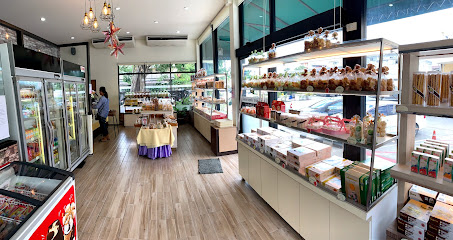
WATSONS CENTRAL NAKORNSRITHAMMARAT
Discover a world of beauty and wellness at Watsons Central Nakhon Si Thammarat, your essential stop for health and beauty products.

Pityaya Product
Explore Pityaya Product, a cozy bookstore in Nakhon Si Thammarat, where literature and local culture come together in a charming setting.

เจมส์เจนนครเครื่องถม
Discover exquisite handcrafted jewelry reflecting Thailand's rich cultural heritage at James Jin, a must-visit destination in Nakhon Si Thammarat.

ไลล่าเครื่องเงิน
Explore the exquisite craftsmanship of Thai silver jewelry and silverware at ไลล่าเครื่องเงิน in Nakhon Si Thammarat, a true artisan's haven.

Essential bars & hidden hideouts
Moonlight Brewery .com
Experience the vibrant nightlife and craft beer culture at Moonlight Brewery in Nakhon Si Thammarat, where every evening is a celebration.

Sixty bar
Experience the vibrant nightlife of Nakhon Si Thammarat at Sixty Bar, where delicious food and refreshing drinks meet a friendly atmosphere.

Feeling Nakornsithammarat
Immerse yourself in the lively ambiance of Feeling Nakornsithammarat, where great drinks and local culture come together in a vibrant nightlife experience.

Wine No6
Discover Wine No6 in Nakhon Si Thammarat, where an extensive selection of wines and a warm atmosphere await wine lovers and casual drinkers alike.

Cindy Pub นครศรีฯ
Experience the lively atmosphere of Cindy Pub in Nakhon Si Thammarat, a perfect blend of local culture, drinks, and entertainment.

Bliss Bar
Discover the vibrant nightlife at Bliss Bar in Mueang Nakhon Si Thammarat, where delightful drinks and delicious bistro-style dishes await every visitor.

The Hobbit House NST
Experience the whimsy and charm of The Hobbit House NST, a unique wine bar in Nakhon Si Thammarat, where enchanting decor meets fine wines.

Roots
Experience the vibrant nightlife of Nakhon Si Thammarat at Roots, where great drinks and local charm await every traveler.

Jeeb Bao Bar
Discover the lively ambiance and unique cocktails at Jeeb Bao Bar in Nakhon Si Thammarat, perfect for a night out! Enjoy local flavors and vibrant entertainment.

Hastag322 Bar - แฮชแท็ก322 บาร์
Discover the pulse of Nakhon Si Thammarat at Hastag322 Bar, where live music and delicious cuisine create an unforgettable night out.

Feelings NST
Discover the vibrant nightlife of Nakhon Si Thammarat at Feelings NST, a lively bar with great drinks and an inviting atmosphere.

Paradise x Chachu bar and restaurant
Experience the vibrant nightlife at Paradise x Chachu Bar in Nakhon Si Thammarat, where delicious drinks meet a lively atmosphere.

Gigge bar
Discover the vibrant nightlife at Gigge Bar in Nakhon Si Thammarat, where local culture and great drinks come together for an unforgettable experience.

้Hobby Whiskey ฮอปบี้วิสกี้
Discover a unique bar experience at Hobby Whiskey in Nakhon Si Thammarat, where a vast selection of whiskies meets warm local hospitality.

Derriere
Discover the vibrant cocktail culture at Derriere, a stylish bar in Nakhon Si Thammarat, blending local flair with international mixology.

Local Phrases
-
- Helloสวัสดี
[sawasdee] - Goodbyeลาก่อน
[la kon] - Yesใช่
[chai] - Noไม่
[mai] - Please/You're welcomeโปรด/ยินดี
[prode/yindee] - Thank youขอบคุณ
[kob khun] - Excuse me/Sorryขอโทษ
[khor toht] - How are you?สุขสบายไหม
[suk sabai mai] - Fine. And you?สบายดี คุณล่ะ
[sabai dee kun la] - Do you speak English?คุณพูดภาษาอังกฤษได้ไหม
[kun poot pah saa anggrit dai mai] - I don't understandฉันไม่เข้าใจ
[chan mai khao jai]
- Helloสวัสดี
-
- I'd like to see the menu, pleaseขอดูเมนูหน่อย
[khor duu menu noi] - I don't eat meatฉันไม่กินเนื้อ
[chan mai kin nuea] - Cheers!ชนแก้ว
[chon gaeo] - I would like to pay, pleaseขอเสร็จบิลหน่อย
[khor set bill noi]
- I'd like to see the menu, pleaseขอดูเมนูหน่อย
-
- Help!ช่วยด้วย
[chuay duay] - Go away!ไปทางอื่น
[pai tang uen] - Call the Police!โทรตำรวจ
[tor tamruat] - Call a doctor!โทรหมอ
[tor mor] - I'm lostฉันหลงทาง
[chan long tang] - I'm illฉันไม่สบาย
[chan mai sabai]
- Help!ช่วยด้วย
-
- I'd like to buy...ฉันอยากซื้อ...
[chan yahk seuu...] - I'm just lookingฉันเพียงชม
[chan piang chom] - How much is it?ราคาเท่าไหร่
[ra kah thao rai] - That's too expensiveแพงเกินไป
[paeng kern pai] - Can you lower the price?ลดราคาได้ไหม
[lot ra kah dai mai]
- I'd like to buy...ฉันอยากซื้อ...
-
- What time is it?ตอนนี้กี่โมง
[ton nee kee mong] - It's one o'clockเป็นโมง
[pen mong] - Half past (10)สามสิบครึ่ง
[sam sip khrung] - Morningเช้า
[chao] - Afternoonบ่าย
[bai] - Eveningเย็น
[yen] - Yesterdayเมื่อวาน
[meua waan] - Todayวันนี้
[wan nee] - Tomorrowพรุ่งนี้
[phrung nee] - 1หนึ่ง
[neung] - 2สอง
[song] - 3สาม
[sam] - 4สี่
[si] - 5ห้า
[ha] - 6หก
[hok] - 7เจ็ด
[chet] - 8แปด
[paet] - 9เก้า
[gao] - 10สิบ
[sip]
- What time is it?ตอนนี้กี่โมง
-
- Where's a/the...?...อยู่ที่ไหน
[... yu tee nai] - What's the address?ที่อยู่อยู่ที่ไหน
[tee yu yu tee nai] - Can you show me (on the map)?ช่วยแสดงที่ฉัน(บนแผนที่)
[chuay sa-dang tee chan (bon pheun tee)] - When's the next (bus)?เมื่อไหร่รถบัสถัดไป
[meua rai roht bus tat pai] - A ticket (to ....)บัตรโดยสาร(ไป...)
[bat doy saan (pai...)]
- Where's a/the...?...อยู่ที่ไหน
History of Nakhon Si Thammarat
-
Nakhon Si Thammarat, one of Thailand's oldest cities, has roots dating back over 1,000 years. The city was originally part of the Srivijaya Empire, a powerful maritime and commercial kingdom that flourished between the 7th and 13th centuries. This strategic location made it a critical hub in the region for trade, culture, and religion, particularly Buddhism.
-
During the 13th century, Nakhon Si Thammarat became the center of the Tambralinga Kingdom. This period saw significant growth in the city's influence across the Malay Peninsula. Tambralinga's rulers established strong trade connections with China, India, and other Southeast Asian kingdoms, fostering a rich cultural and economic environment.
-
In the 14th century, the city became a vassal state of the Ayutthaya Kingdom. This relationship brought about a period of cultural and architectural development. Wat Phra Mahathat Woramahawihan, one of Thailand’s most important Buddhist temples, was constructed during this time and remains a central landmark in the city. The temple features a 78-meter high stupa that enshrines a relic of the Buddha.
-
The Burmese invasion in the 18th century led to significant destruction in Nakhon Si Thammarat. However, the city's resilience showed through its quick recovery and restoration. By the early 19th century, under the reign of King Rama I of the Rattanakosin Kingdom, the city regained its importance as a cultural and administrative center.
-
In the 20th century, Nakhon Si Thammarat modernized while preserving its rich historical and cultural heritage. Today, the city is known for its vibrant festivals, traditional performing arts, and unique local cuisine. The annual Hae Pha Khuen That Festival, for instance, draws thousands of visitors who come to witness the grand procession and offerings made to the sacred stupa at Wat Phra Mahathat Woramahawihan.
Nakhon Si Thammarat Essentials
-
Nakhon Si Thammarat is accessible by both air and land. The nearest airport is Nakhon Si Thammarat Airport (NST), which is served by several domestic airlines with regular flights from Bangkok. Alternatively, you can take a train from Bangkok's Hua Lamphong Railway Station to Nakhon Si Thammarat Railway Station, a journey that takes around 12 hours. Buses also operate from Bangkok and other major cities to Nakhon Si Thammarat, taking approximately 10-12 hours.
-
Within Nakhon Si Thammarat, local transportation options include tuk-tuks, songthaews (shared pick-up trucks), and motorbike taxis. These are convenient for short distances within the city. For longer journeys, you can rent a car or a motorbike. There are also public buses that connect the city to nearby towns and attractions.
-
The official currency in Thailand is the Thai Baht (THB). Credit cards are widely accepted in hotels, restaurants, and larger shops, but it's advisable to carry cash for purchases at smaller establishments and markets. ATMs are plentiful in Nakhon Si Thammarat, and currency exchange services are available at banks and exchange kiosks.
-
Nakhon Si Thammarat is generally a safe destination for tourists. However, it's wise to follow standard safety precautions such as avoiding poorly lit areas at night and keeping an eye on your belongings in crowded places. While the city does not have specific high-crime areas targeting tourists, it's always best to stay vigilant and aware of your surroundings.
-
In case of an emergency, dial 191 for police assistance or 1669 for medical emergencies. The main hospital in Nakhon Si Thammarat is Maharaj Nakhon Si Thammarat Hospital, which provides comprehensive medical services. It’s advisable to have travel insurance that covers medical emergencies. Pharmacies are also available throughout the city for minor health issues.
-
Fashion: Do dress modestly, especially when visiting temples. Avoid wearing revealing clothing. Religion: Do respect local customs and traditions. Always remove your shoes and cover your shoulders and knees when entering temples. Public Transport: Do be respectful and give up your seat to elderly passengers. Don’t eat or drink on public transport. Greetings: Do greet people with a wai (a slight bow with palms pressed together). Eating & Drinking: Do try local delicacies and accept food offerings graciously. Don’t refuse hospitality, as it is considered impolite.
-
To experience Nakhon Si Thammarat like a local, visit the bustling Thung Song Night Market where you can enjoy a variety of local street food. Engage with locals, as they are often friendly and willing to share stories about their city’s history and culture. Don’t miss Wat Phra Mahathat, one of the most important Buddhist temples in southern Thailand. For a unique experience, visit the shadow puppet show at the Suchart Subsin Shadow Puppet Museum, showcasing traditional Thai puppetry.
Trending Landmark in Nakhon Si Thammarat
-
Wat Phra Mahathat Woramahawihan
-
Sanam Na Muang Public Park
-
Kiriwong Village
-
Princess Mother 84 (Thung Tha Lat).
-
Wat Khao Khun Phanom
-
Old City Wall, Old City Fort of Sridramasokarad
-
Tal Lat Open Zoo
-
Bannang Thalung Suchart Subsin
-
Krungching Waterfall
-
Karom Waterfall
-
Khao Luang National Park
-
City Pillar Shrine
-
Phrathat Night Market
-
Muang Nakhon Reception House
-
Wat Tao Kot
Nearby Cities to Nakhon Si Thammarat
-
Things To Do in Trang
-
Things To Do in Krabi
-
Things To Do in Surat Thani
-
Things To Do in Koh Samui
-
Things To Do in Phuket
-
Things To Do in Satun
-
Things To Do in Ranong
-
Things To Do in Langkawi
-
Things To Do in Chumphon
-
Things To Do in George Town
-
Things To Do in Penang
-
Things To Do in Kota Bharu
-
Things To Do in Koh Rong
-
Things To Do in Ipoh
-
Things To Do in Hua Hin






